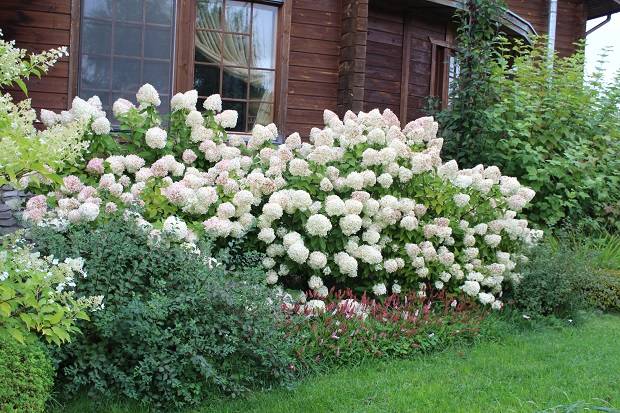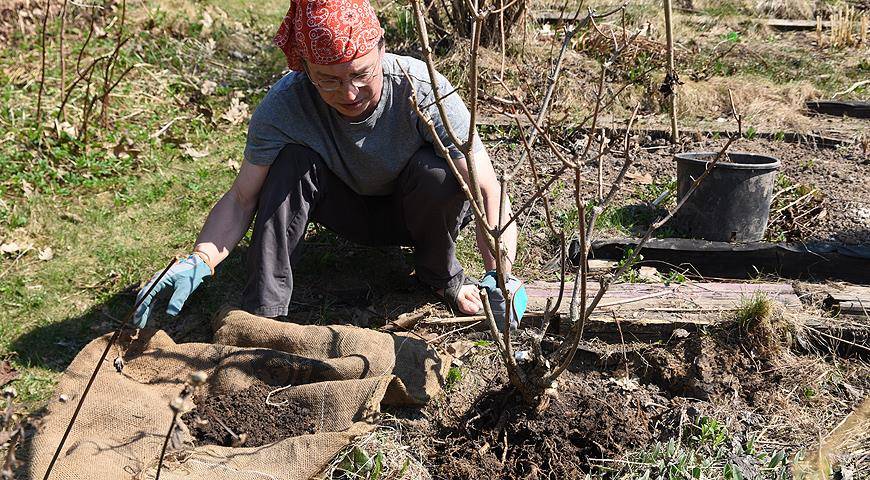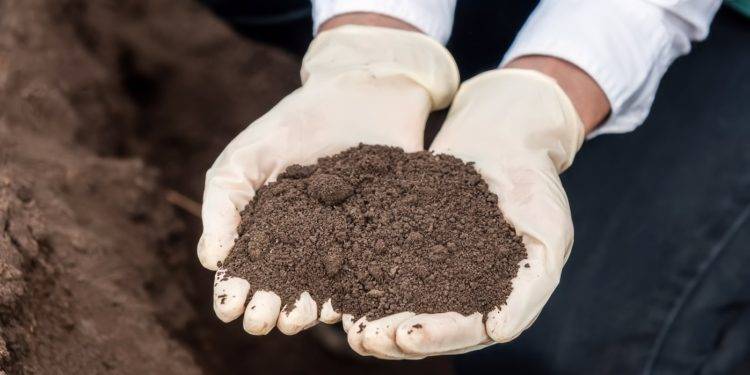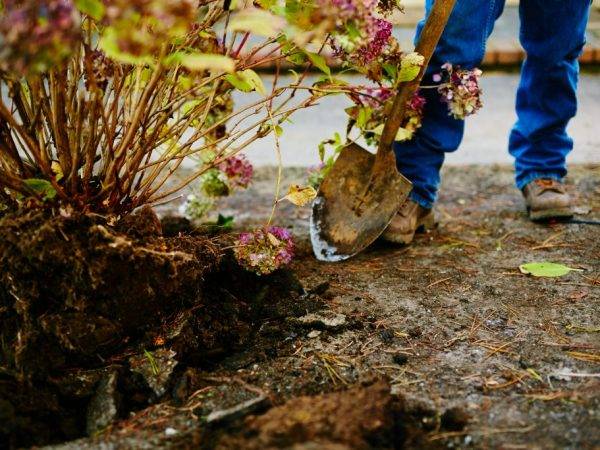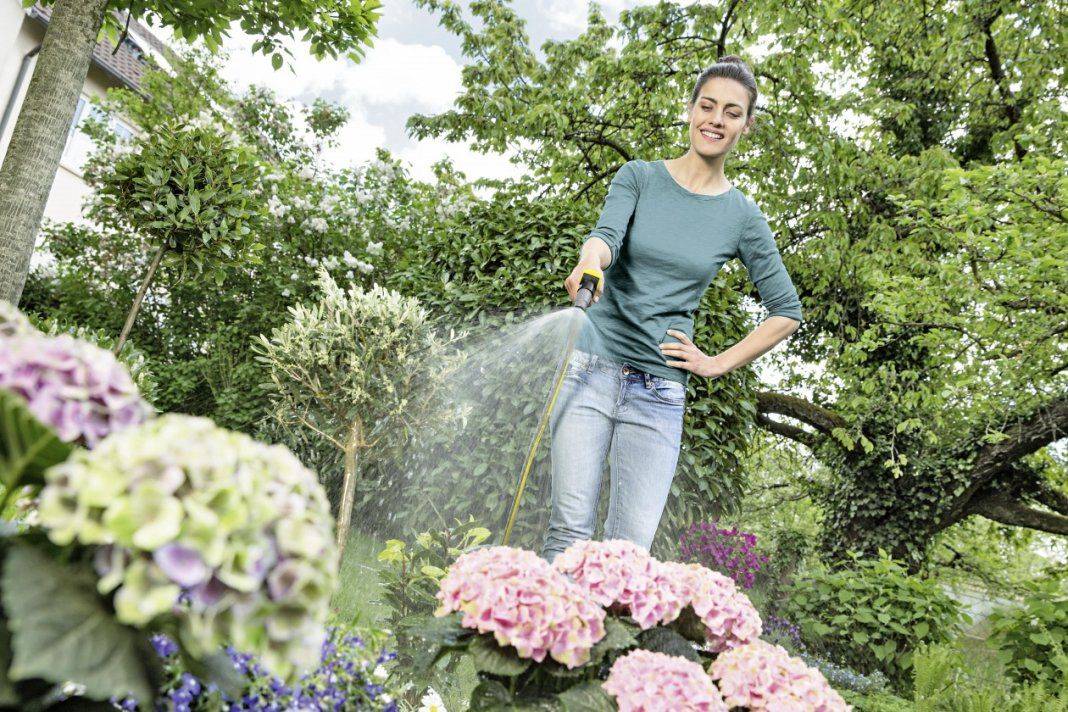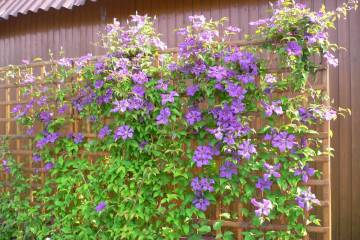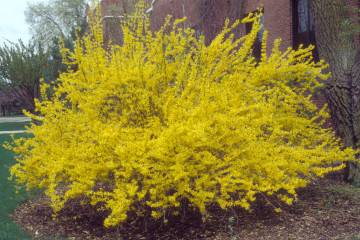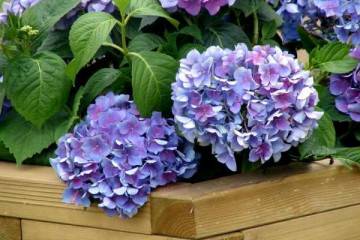Transplanting hydrangeas from one place to another - when and how to do it
Content:
Hydrangea transplant is a rather complicated and responsible process that requires compliance with a number of rules and recommendations. Culture refers to perennials that can develop in one place for years. If it is necessary to move the plant to a new site, the procedure must be carried out very carefully so as not to damage the root system.
Why transplant a hydrangea to a new place or to another pot
In order for a hydrangea to bloom luxuriantly and profusely, it needs adequate care. Sometimes the culture has to be transplanted to a new place. Most often this is done in such situations:
- The area on which it grows does not suit the flower. In this case, there is a lag in growth and the development of diseases.
- The place for the plant was not chosen correctly, and it disturbs people.
- The soil in which the hydrangea grows is severely depleted. A culture can grow in one place for 10 years. However, experienced growers transplant hydrangeas every 5 years.
- The indoor hydrangea has grown a lot, and the pot has become too small for it.
Novice growers are interested in when it is possible to transplant a hydrangea from one place to another. The success of the procedure directly depends on the correct choice of the time for performing the procedure.
When is it better to transplant: the pros and cons of different transplant times
Experienced growers are advised to move the culture to a new place at different times - in spring or autumn. Sometimes the plant needs an urgent transplant. It is performed in the summer.
In the spring
In springtime, the hydrangea is transplanted even before the shrub begins to awaken and bud open. It is important that the snow melts completely. The disadvantage of transplanting hydrangeas in the spring to another place is that the plant spends a lot of energy on restoring the roots. This negatively affects flowering.
Summer in June or July - transplanting flowering hydrangea
Many gardeners are interested in whether it is possible to transplant a garden hydrangea in June or July. It is permissible to do this only in extreme cases. At the same time, transplanting a crop during the flowering period is very dangerous. It can lead to a lack of flowering for several years or the complete death of the bush.
In autumn
Autumn is considered the ideal time to plant a plant. Specific dates depend on regional characteristics. In the middle lane and in the Moscow region, tree and panicle hydrangea can be planted in September. Depending on the weather, the procedure is carried out at the beginning or end of the month.
In the Leningrad region, bushes can be planted in early or mid-September. This region has a damp climate that will benefit the plant. This culture needs a sufficient amount of moisture.
Short autumn is typical for Siberia and the Urals. Therefore, it is better not to move the plant to a new place in the fall. Sometimes it is allowed to transplant at the end of August. For the winter, the bushes must be insulated with spruce branches, foliage or lutrasil.
The southern regions are characterized by warm autumn and mild winters. Therefore, the culture can be transplanted in October. Even a large-leaved hydrangea can withstand an autumn transplant. Most often, the procedure is carried out at the beginning or end of September. The indoor bush should be replanted in April.
How to properly transplant a garden hydrangea
There is nothing difficult about how to transplant a hydrangea. First you need to choose the right planting site and suitable soil. This will provide an easy adaptation for the bush.
Seat selection
When choosing a site, it is important to consider that the plant should receive a lot of light in the morning and in the evening. Moreover, most of the time it should be in partial shade. Complete wind protection is also important. Otherwise, the bushes may break.
Pit and soil preparation
For growing hydrangeas, it is worth using loose and fertile soil. It should have a slightly acidic reaction - 5-6.2 pH. You need to prepare a well for planting in advance - at least 2 weeks in advance.
The size of the planting pit depends on the volume of the seedlings. Most often they are made 50-60 cm wide. When planting several bushes, it is worth maintaining an interval of 1-1.5 m, since they are characterized by rapid growth.
Plant preparation: with a lump of earth or dividing a bush
To facilitate the process of digging up an adult bush, it must be well watered. Thanks to this, the clod of earth will hold tightly and will not fall apart during transplantation. Then you need to carefully dig in the plant from all sides. It is worth retreating from the center 20-25 cm.
After digging up, you can plant the plant in a new location. It is permissible to do this with a lump of soil. If you plan to divide the bush, the root system of the plant must be cleaned of excess soil. Then the plant is divided into several fragments. Each of them must have kidney renewal. After that, each bush must be planted on a hill and the root system should be spread.
Direct transplant
To plant a hydrangea, you need to do the following:
- Place the plant in the center of the groove.
- Sprinkle with earth up to the root collar. It should be flush with the soil surface.
- Tamp down the soil slightly.
- Water the bush abundantly.
- If the earth settles, it needs to be filled up.
Features of transplanting room hydrangea from pot to pot
For the first time, a houseplant must be transplanted immediately after purchase. This will help renew the soil and get rid of the mealybugs that may be in the soil.
A culture transplant should be carried out annually. In this case, you need to increase the size of the pot and change the depleted soil. The organization of the drainage layer is of no small importance. For each transplant, you need to use a pot 4 cm larger in diameter.
In order for a hydrangea to normally adapt to new conditions, it needs moisture. Therefore, the bush must be systematically watered and sprayed with warm water.
Systematic fertilization is also important. This should be done during a period of active development. In this case, the culture should be kept away from the window so that it does not get burned. Also, it should not be placed in a draft. This provokes the development of diseases and the death of the culture.
Caring for a transplanted hydrangea
After transplanting, hydrangea needs particularly careful care. It should be comprehensive.
In the garden
For irrigation, use only purified soft water. The plant does not tolerate the influence of lime well. It is best to water the bushes with rainwater. When using tap liquid, it must be settled and heated.
For the prevention of chlorosis, vinegar or lemon juice should be added to the water. Also, to prevent the disease, it is necessary to add iron salts to the soil.
To achieve lush flowering, the culture must be systematically fed. For this, mineral fertilizers are used. They should be applied at least 4 times a year.
To change the color of the buds, 2 times a month it is worth adding iron salts and alum to the soil. If you use them on only one side of the bush, you can get inflorescences of different shades on one plant.
To prevent root rot in the first year after transplantation, it is worth using a weak solution of potassium permanganate. You can also use any other fungicidal preparation. This will help disinfect the soil and avoid the development of dangerous diseases.
You should not cut the bush too much. Instead, it is recommended to tear off the foliage at the base. In a region with a harsh climate, the bushes need to be spud up at the stage of preparation for winter.
At home
In order for the indoor hydrangea to tolerate the transplant normally, it needs to be looked after especially carefully for 2 weeks. At this time, the flower pot should be in partial shade. In this case, it is necessary to control the condition of the soil. It should not be too wet or too dry. After watering, the soil must be loosened.
The flower needs an annual transplant, which is recommended in April or after flowering. 2 weeks after the procedure, you need to put the pot with the bush in the chosen place.
Transplanting a culture has a number of features. In order for the hydrangea to normally transfer the movement to a new place, you need to know when to transplant the hydrangea, as well as pay attention to choosing a site for it and choose the right soil composition. Strict adherence to the planting technology is of no small importance.
